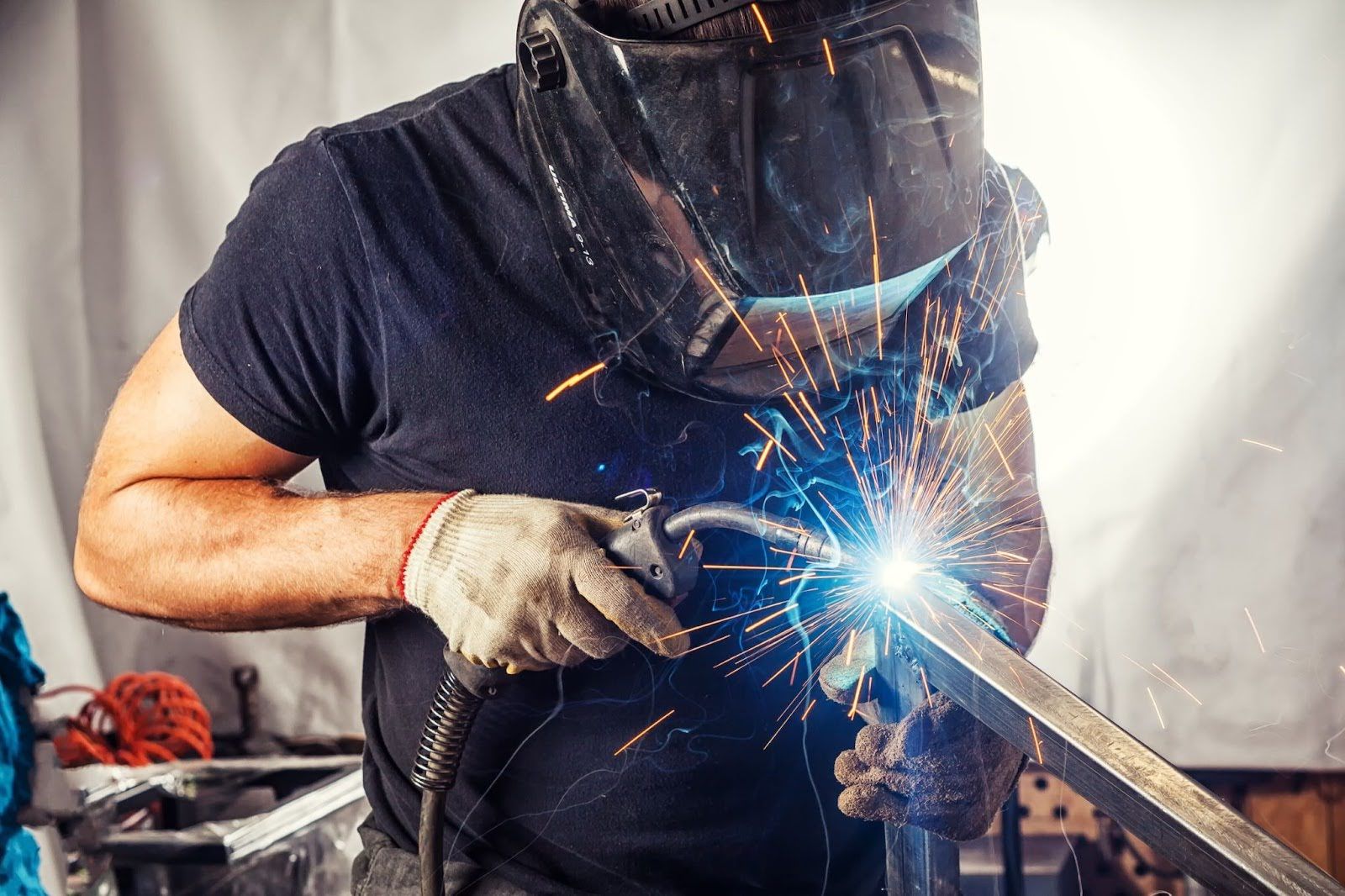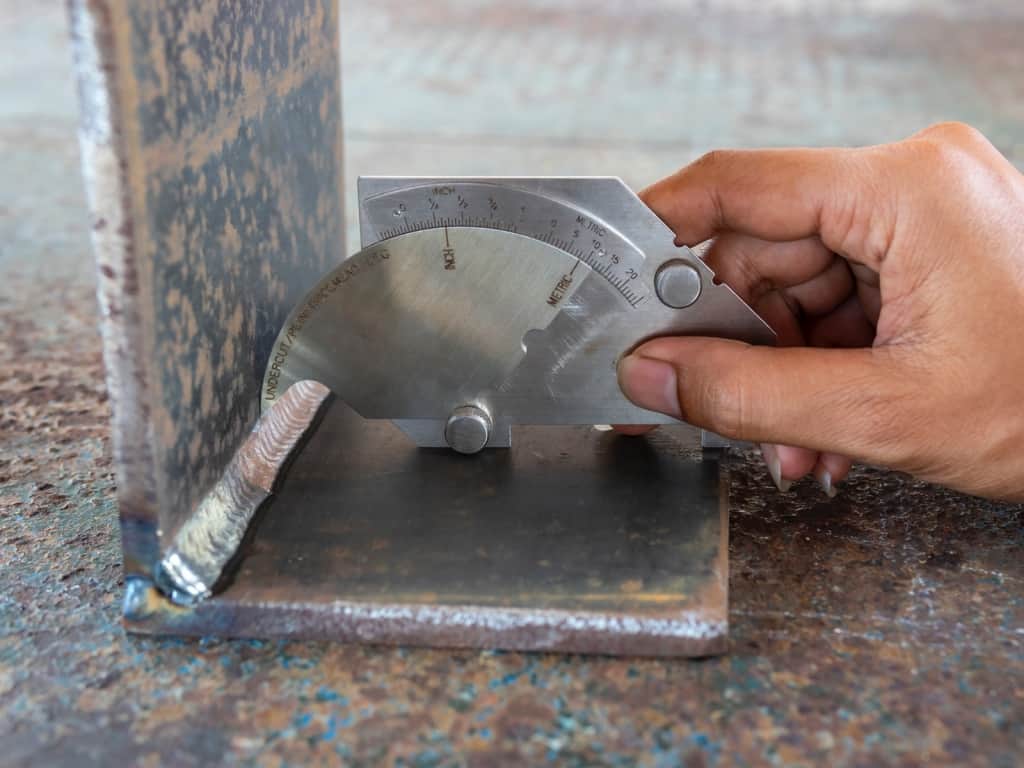Ideal Practices for Preventing Weld Undercut: Mastering the Basics
Ideal Practices for Preventing Weld Undercut: Mastering the Basics
Blog Article
Vital Tips for Welders: Avoiding Undercut Welding and Ensuring Stronger Weld Joints
In the world of welding, accomplishing resilient and strong weld joints is the keystone of creating high-grade job. One usual difficulty that welders typically experience is undercut welding, which can compromise the honesty of the weld joint.

Recognizing Undercut Welding
Undercut welding is a common welding issue that occurs when the weld steel stops working to correctly load the groove and results in a groove-like anxiety along the weld grain. This problem damages the weld joint, making it vulnerable to fracturing and failure under stress and anxiety. Undercutting can be brought on by numerous elements, consisting of too much welding present, high welding rate, improper electrode angle, inaccurate electrode dimension, and inadequate welding technique.
One of the major reasons for undercut welding is a discrepancy in between the welding current and the welding speed. If the welding current is as well high or the welding rate is also fast, the weld steel might not properly fill up the groove, bring about damaging. Additionally, utilizing an electrode that is as well large can result in a similar result, as the excess steel can not effectively move right into the groove.
To stop undercut welding, welders need to guarantee they are making use of the correct welding parameters, preserve an appropriate electrode angle, select the ideal electrode dimension, and practice proper welding techniques. By dealing with these elements, welders can reduce the risk of undercutting and produce stronger, much more reputable weld joints.
Appropriate Welding Method
Efficient welding method plays a critical duty in making certain the top quality and honesty of weld joints. Correct welding method includes a combination of accuracy, skill, and adherence to finest practices. One essential facet of proper welding method is maintaining the correct angle and distance in between the welding weapon and the workpiece. Welders must likewise pay very close attention to the traveling speed and warmth input to avoid issues like damaging, porosity, or insufficient fusion.
Additionally, a stable and regular hand motion is important for developing strong and durable weld joints. Welders need to go for smooth, consistent motions to ensure even circulation of the weld material. Correct control of the welding gun and filler material is additionally essential to attaining ideal infiltration and combination.
Additionally, regulating the heat input and choosing the appropriate welding specifications based upon the material being bonded are vital consider achieving high-grade welds - Preventing weld undercut. Welders ought to comply with the advised settings supplied by welding procedure specs and readjust them as needed based on the certain needs of the project. By grasping correct welding techniques, welders can substantially boost the strength and reliability of their weld joints
Selecting the Right Electrode
Keeping the correct angle and range in between the welding gun and the work surface is fundamental when considering the importance of choosing the ideal electrode in welding applications. The option of electrode plays a critical role in determining the quality and toughness of the weld joint. Electrodes can be found in numerous kinds, each made for specific functions and products.
First of all, choosing the proper electrode diameter is vital. Thinner electrodes appropriate for welding thin materials, while thicker electrodes are better for thicker products and greater warmth applications. Matching the electrode size to the density of the workpiece helps attain a well balanced weld.
Second of all, comprehending the material structure of the electrode is important. Different electrodes are designed for welding specific products like steel, stainless-steel, light weight aluminum, or cast iron. Utilizing the appropriate electrode material ensures good combination and reduces the threat of flaws in the weld.
Lastly, taking into consideration the welding placement and technique is important when picking the electrode type. As an example, particular electrodes are better matched for vertical or overhead welding placements, while others function well for flat or horizontal placements. Choosing the right electrode based upon the welding method enhances the total weld high quality and integrity.
Preparing the Base Steel
To ensure a successful welding procedure, what preliminary actions should be taken when preparing the base metal for welding? Furthermore, any kind of existing weld product or residue from previous welding ought to be gotten rid of to ensure a tidy surface area for the brand-new weld.

Performing Post-Weld Assessments

After conducting these assessments, welders must contrast the outcomes against industry standards and job demands to make sure that the weld joint satisfies all necessary standards. Any kind of inadequacies or inconsistencies discovered during the post-weld inspection needs to be immediately dealt with through ideal restorative steps to assure the weld's stability. By carefully carrying out post-weld inspections and without delay attending to any concerns, welders can support the quality and dependability of their work, inevitably adding to the safety and long life of the welded frameworks.
Conclusion

In final thought, avoiding undercut welding and making certain stronger weld joints call for a combination of correct welding method, picking the best electrode, preparing the base steel correctly, and performing post-weld evaluations. By recognizing the reasons for undercut welding and applying the required preventative measures, welders can produce high-grade weld joints that meet market criteria and guarantee the architectural honesty of the welded elements.
Undercut welding is a common welding problem that my link happens when the weld steel fails to appropriately load the groove and results in a Discover More Here groove-like depression along the weld bead (Preventing weld undercut). Damaging can be created by various elements, consisting of too much welding current, high welding speed, incorrect electrode angle, inaccurate electrode dimension, and inadequate welding technique
One of the main reasons for undercut welding is a discrepancy between the welding present and the welding rate. If the welding current is also high or the welding rate is read this also quickly, the weld steel may not sufficiently load the groove, leading to undercutting.Maintaining the appropriate angle and distance between the welding gun and the work surface is essential when taking into consideration the relevance of picking the right electrode in welding applications.
Report this page